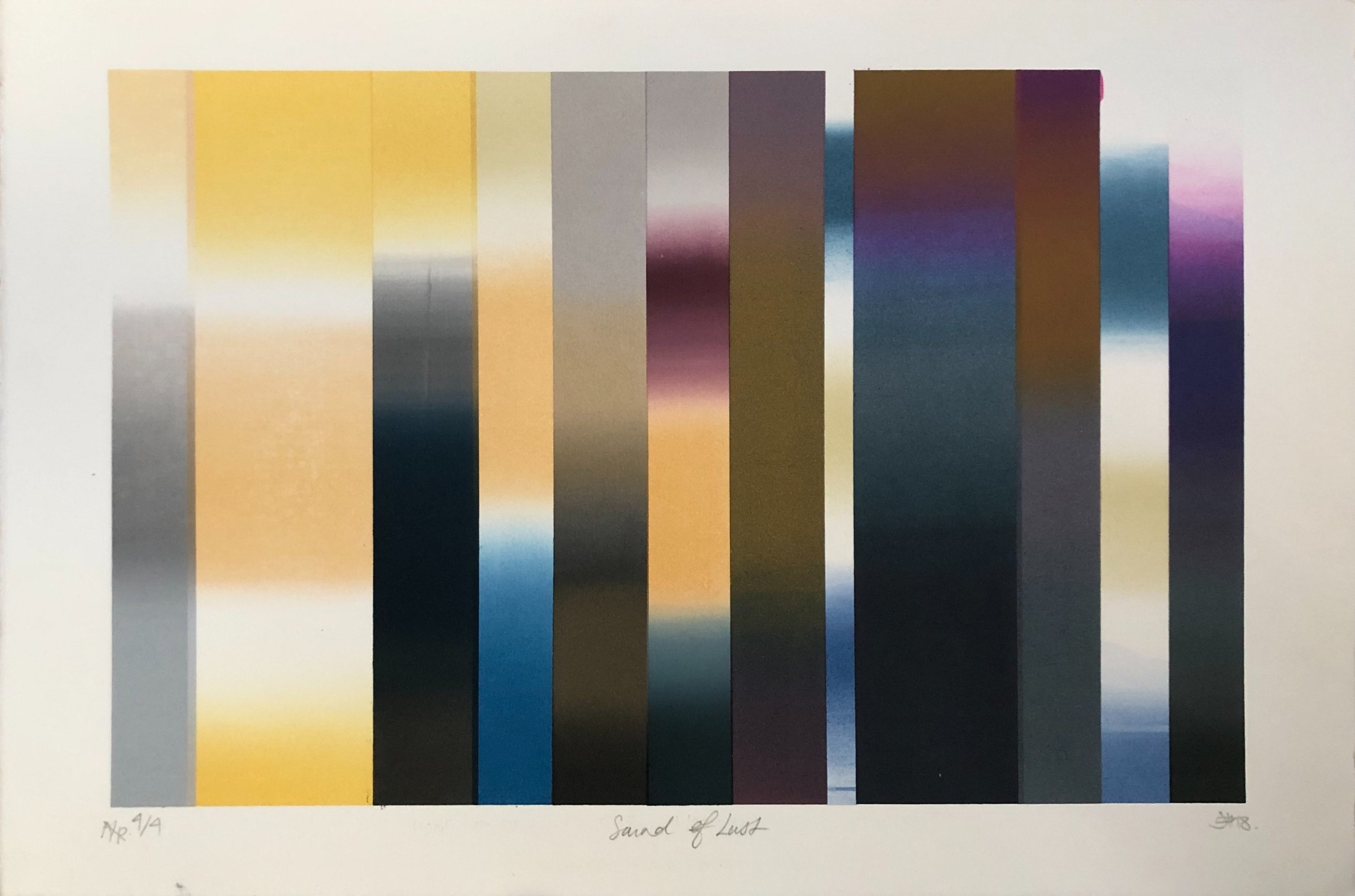JAH (aka Judith Harvey)
JAH (aka Judith Harvey) is an emerging Sound and Serigraphy artist based on the Central Coast, NSW. She is a graduate of the University of New South Wales, Art & Design, with a Bachelor of Fine Art with honours. She is the mind and artist behind the theorem of Visual Transposition. Her theorem of Visual Transposition takes music composition and delineates the inherent nature of a composers’ arrangement, and translates them into visuals.
JAH has exhibited nationally and internationally in group shows and awards since 2015. Notable achievements include the 4th Xi’an International Printmaking Workshop in 2017, a Group exhibition showcasing students from globally esteemed universities in the East Gallery of the Xian Academy of Fine Art, in Xi’an, China. She has also exhibited in The Art Space, Singapore, and currently have work showing in the Clyde and Co Law firm on George Street, Sydney. Most recently, she debuted in a Solo Exhibition Music Meets Screen Print at M2 Gallery Surry Hills, Sydney (2021) and a group exhibition Edition Two (2021) at White Rhino Gallery with More Than Reproduction.
JAH has won notable prizes such as the 2018 New South Wales, Royal Agricultural Society Medallion for Excellence in Printmaking, in addition to receiving first place in the Printmaking class in the Arts and Crafts section of the Royal Easter Show. She was also a finalist for the 2017 Mosman Youth Art Prize, 2018 Waverley Art Prize, and 2018 & 2020 Fisher's Ghost Prize.
#26 | Sound of Lust, 2019, visual transposition screenprint from 20 stencils, 38 x 50 cm, $200.
The Sound of Lust is titled as such because it is missing its shape layers or ‘Thematics' as termed in my Visual Transposition theorem. The ‘Thematics’ missing from this half complete Visual Transposition visually represents the depicted events from the source material, Pirates of the Caribbean: On Stranger Tides - Shipyard Mermaid Scene. What has been printed is a direct musical to art translation using textures in music which is a part of my Visual Transposition Theorem. Hans Zimmer uses a progression in music textures during this music piece, beginning with Homophony transitioning into Biophonic. These textures translate accordingly; Homophony —> Primary colour representing Melody and Secondary colour representing Harmony, Biophony —> Two distinct lines, lower sustaining drone/bass represented as black or dark hue, Primary colour representing elaborate melody, secondaries overlaid if multi-layered melodies. Also, the registration was not up to scratch.
I held onto this artwork because I felt it was visually soothing and greatly appreciated how the colours sat together to form the soundscape as a whole. Also, this print and another from a different series I found was more visually appealing without the “Thematic” layers, however made no logical sense in terms of how a visually complete Visual Transposition Theorem print represents music. This print is from 2018 during my first semester of Honours, a truly trying time for my artist practice.
Specifically, it is from a series of experiments that expanded my knowledge of screen printing materials and how they might help visually create finer details featured in previous music pieces analysed. For example, an ethereal timbre can be represented through iridescent, gold, or silver glittering layers.

